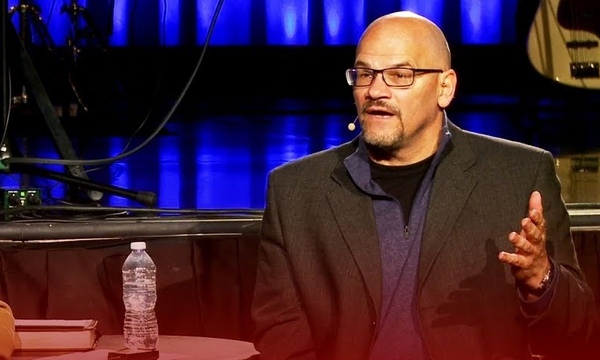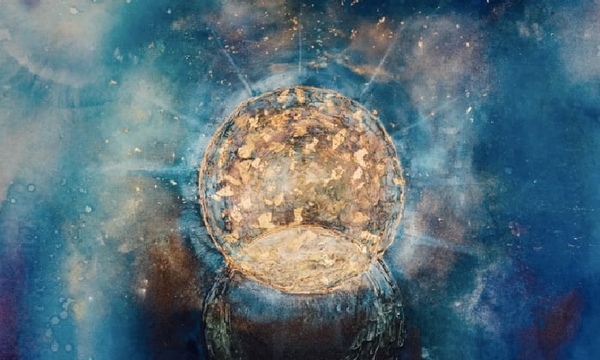Xidong Chen, professor of physics, has pushed student research to the next level in Biola University’s science department in the last five years. Chen, who received the Provost Faculty Award for Excellence in Scholarship at Biola this past semester, developed a research seminar course with professor of chemistry, John Silzel, to encourage student research, which Chen sees as necessary for student learning and success in the field of science.
With the support of John Bloom, Biola’s chair of chemistry, physics and engineering, Chen built a supercomputer to run calculations necessary for research that are impossible for personal computers to take on. In doing so, he made Biola one of the first liberal arts schools of its size to not only create a supercomputer, but use it for real, practical research. Silzel, professor of chemistry, recently published a paper based on work conducted using this supercomputer.
Chen’s pioneership has helped elevate students’ learning experience and strengthened other efforts within the sciences at Biola, which will soon be part of Biola’s new School of Science, Technology and Health housed in the new $63 million Alton and Lydia Lim Center for Science, Technology and Health, set to open in 2017.
While Chen encourages student research, he continues his own research as well. Last year, for a study funded by the Department of Energy as well as the National Science Foundation, Chen applied a solution of the Hele-Shaw problem to understand surface dynamics at atomic levels, which could have a significant impact overtime in various industries.
Here, Chen shares about some of his recent research and how physics was integral in his faith journey.
Once you started teaching at Biola, you pushed for more research from students. Can you tell me more about that?
First of all, research is an important pedagogical tool of teaching. Through research, students can apply what they have learned and develop independent problem solving skills. Only when facing real life problems, students recognize their inadequacies and teach themselves how to solve those problems. Secondly, research experience is expected of undergraduate students by reputable graduate programs. Having research experience enables our graduates to be competitive when they apply for graduate school and medical schools. Finally, engaging students in research is ultimately about pursuing excellence in what we do, particularly in our professions, so that Christ will be honored.
Has this led to collaboration across disciplines or with other professors?
I am currently actively collaborating with Dr. John Silzel in my department. He has been using the cluster that I built to perform computationally intensive calculations. We are currently working on understanding dye polymers, or long strings of molecules that can bond with colored dyes. These dye polymers are used in LEDs and even in medical markers to help diagnose and track a disease. My particular interest is to apply approaches in solid-state physics to these unique polymers. We started an informal research seminar series this past spring semester. Students in his research group were invited to join us to discuss research ideas that they would not have seen in typical textbooks.
What inspired you to build the supercomputer at Biola?
When I first came to Biola, I wanted to conduct some basic density functional theory calculations. Density functional theory (DFT) is an area of frontier research in which we try to understand and predict how different materials will behave by conducting quantum mechanical calculations. I soon realized such calculations could not be run on any computer that I had access to at the time. I knew that I could build a supercomputing cluster at a relatively low cost by connecting personal computers and making them communicate with one another. This typically requires knowledge of Linux, an operating system that is one of my hobbies. So I proposed this idea to my department chair, Dr. Bloom, who was very supportive. He bought some used computers and I connected them together. The end product was a computer cluster of 40 computers with more than 300 GB RAM (a high end laptop typically has 8 GB RAM) that is capable of running standard density functional theory calculations. This gives us capabilities of pursuing and engaging in frontier research in the area of computational chemistry and physics.
What was the solution you solved last year relating to the Hele-Shaw problem and how might it impact the future?
The Hele-Shaw problem is a mathematical model to describe a particular kind of flow in fluid mechanics. It is related to Stefan moving boundary problems. For example, as ice is melting, the boundary between the solid ice and the liquid water is moving. To understand this, we need to solve a set of differential equations with moving boundary conditions. Practically, an important example is how icebergs melt at the Arctic and the Antarctic.
My contribution is mainly mapping the Hele-Shaw problem to the surface dynamics under investigation using Low Energy Electron Microscopy (LEEM). This means that we understand better how oxide (such as rust) grows when oxidation is in its beginning stages. Understanding like this, combined with other discoveries, could potentially help us design better protective layers against corrosion, find better ways of processing super-alloys for jet engines, or improve properties of oxides (such as silicon dioxide) used in making tiny electronics. The recent water crisis due to corrosion in aged pipes in Flint, Michigan highlights the importance of studies like ours. The fact that our work was published in the Proceedings of the National Academy of Sciences also attests to its importance.
How has physics and science impacted your journey as a Christian?
I was born in China and brought up as a communist. When I was in high school, I noticed rampant corruption and social injustice in the society around me and started questioning the communist doctrines that were taught to me. When I studied theoretical physics in my senior year in college, I felt the existence of God was plausible. The beauty of physics also suggested the existence of a Creator. This Creator, however, seemed so great and far away at this point that I could not imagine having a personal relationship with him. After the Tiananman Square massacre, any remaining faith I had in the Communist Party was shattered and I began the process of applying to graduate schools in the states.
From the first day I moved into my graduate dormitory at the University of Illinois at Urbana-Champaign, I was surrounded by Christians. I became good friends with several of them. I started to go to Bible studies with my friends. The Bible not only presented to me the truthfulness of God but also convicted me of the sinfulness of man. I was enabled to see my own sin and my essential need for the Savior. So by God’s grace, I decided to follow Jesus as my personal Savior.
How have you been able to integrate faith into your physics courses?
Physics, particularly modern physics, testifies to God’s eternal power and divine nature. Personally, my understanding of physics helps me grasp abstract or difficult theological concepts. It is a great blessing for one to be able to understand and love physics and to catch a glimpse of God’s glory through studying physics. In turn I am able to share my insights with students at a level accessible to them in my classroom. For example, I point out consistencies of modern physics with the Christian worldview when covering principles such as the uncertainty principle — there are certain things we cannot know just as the secret things belong to God (Deuteronomy 29:29). I also require students in my General Physics III course to write an integration paper addressing if and how physics is consistent with their faith.
Is there anything else you’d like to share?
I am excited about Biola’s future and thrilled about where Biola is going. I see great potential for Biola to build first-rate undergraduate programs in the sciences because of our unique areas of strength. Of course there will be challenges but we know where our help comes from.
Biola recently announced the hiring of Paul W. Ferguson as the Founding Dean of the School of Science, Technology and Health.
Learn more about Biola’s Chemistry, Physics and Engineering department.
Written by Jenna Loumagne, media relations specialist. For more information, contact Jenna at (562) 777-4061 or jenna.loumagne@biola.edu.
 Biola University
Biola University
_(1).jpg)

_(1).jpg)